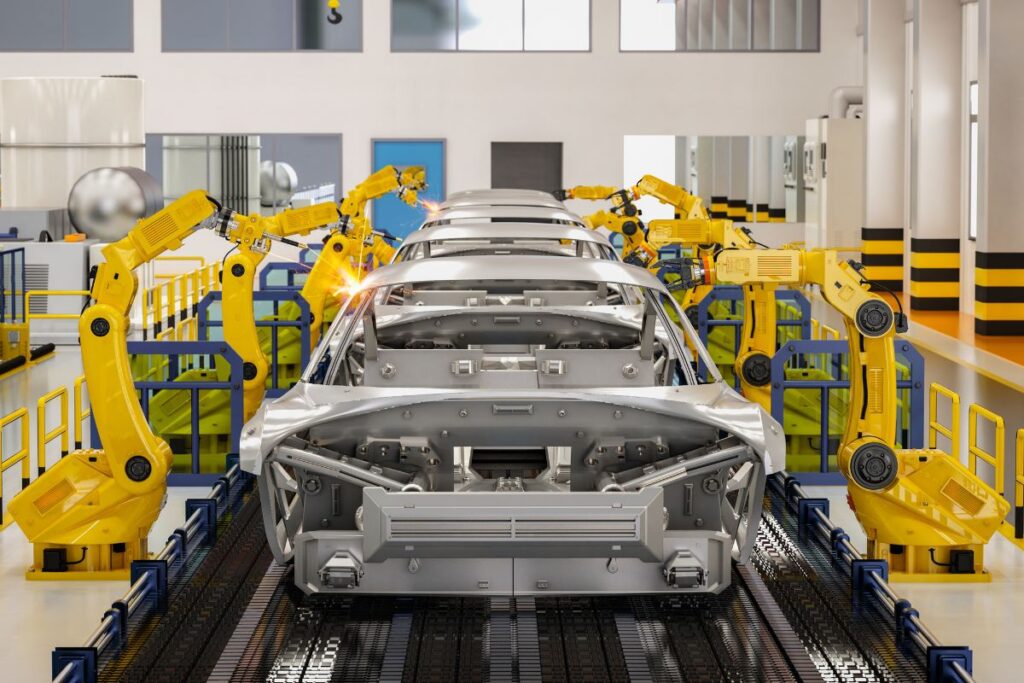Ratan Tata, Icon of Global Business and Expansion, Passes Away at 86

Ratan Tata, the legendary industrialist and philanthropist, passed away in Mumbai on October 9, 2024, at the age of 86. He is widely recognized for transforming Tata Group into a global business empire and expanding its presence to over 100 countries. His death was announced by Tata Group Chairman Natarajan Chandrasekaran, who praised Tata as a “remarkable leader whose unparalleled contributions have not only shaped the Tata Group but also significantly impacted the nation’s growth.” Chairmanship and Global Expansion As Chairman of Tata Group from 1991 for over two decades, Ratan Tata’s leadership brought the 156-year-old business into the global spotlight. The conglomerate now operates across more than 100 countries and reported $165 billion in revenue for the fiscal year ending in March 2024. Tata’s vision and ambition were instrumental in the group’s vast portfolio, which spans various sectors from automobiles and steel to technology and hospitality. Strategic Acquisitions Under Ratan Tata’s stewardship, the group acquired prominent international businesses, including British steel giant Corus Group in 2007 and luxury carmaker Jaguar Land Rover in 2008. Despite these ambitious moves, Tata’s expansion came at a time of global economic uncertainty, including the 2008 financial crisis, which brought new challenges to the acquisitions. Kavil Ramachandran, executive director of the Thomas Schmidheiny Center for Family Enterprise at the Indian School of Business, noted that “Ratan Tata envisioned big and pushed the Tata empire beyond Indian borders. However, some initiatives, although visionary, faced timing issues.” Leadership Challenges Internal Struggles Ratan Tata’s first tenure as Tata Group Chairman lasted 21 years until his retirement in 2012. He later returned briefly in 2016 during a leadership crisis following the dismissal of his successor, Cyrus Mistry. This period marked one of two intense internal struggles during Tata’s career, the first occurring in 1991 when he initially assumed leadership and had to contend with long-serving executives holding significant control within the company. Despite these conflicts, Tata prevailed both times, securing his legacy within the conglomerate. The Mistry Controversy In 2016, after Mistry’s ouster as Chairman of Tata Sons, the Tata Group’s main holding company, a bitter legal battle ensued between the Mistry family and Tata Sons. The dispute strained the 70-year-old partnership between the two families and led to Mistry’s family signaling its intention to sell its 18% stake in Tata Sons in 2020. A Legacy of Compassion The 2008 Mumbai Terror Attacks Tata’s leadership extended beyond the boardroom. During the 2008 Mumbai terror attacks, the group’s iconic Taj Mahal Palace Hotel was one of the primary targets. Ratan Tata personally visited the families of the 31 people, including 11 employees, who lost their lives in the attack. His compassionate approach and attention to the victims’ families underscored his philanthropic side and deep-rooted commitment to the community. Personal Life and Philanthropy A Private Individual Despite his vast professional accomplishments, Tata remained a private individual, never marrying and having no children. His passing leaves a significant leadership gap at the helm of Tata Trusts, a charitable organization controlling 66% of Tata Sons. Tata Trusts, traditionally led by a Tata family member, plays a key role in guiding the conglomerate’s direction through its shareholding in Tata Sons. Support for Startups In his later years, Tata became an enthusiastic supporter of startups, backing ventures such as Ola Electric Mobility, which saw tremendous success with its 2024 public offering, and Goodfellows, a platform fostering intergenerational friendships. Early Life and Education Childhood and Family Background Born in Mumbai on December 28, 1937, Ratan Naval Tata was raised by his grandmother after his parents, Naval and Sooni Tata, divorced when he was 10. He attended school in Mumbai before studying at Cornell University, where he initially pursued mechanical engineering. However, he later switched to architecture, fulfilling a personal passion despite his father’s disapproval. Career Beginnings Tata returned to India after college due to his grandmother’s ill health, opting to join the family business rather than accept a job offer from IBM. Ratan Tata’s career with the Tata Group began in 1962, with guidance from then-chairman Jehangir Ratanji Dadabhoy (JRD) Tata. JRD, a distant relative, mentored Ratan Tata, and by 1991, Ratan was chosen to lead the conglomerate. Major Achievements The Indica and Expansion into Automobiles At the time Ratan Tata became chairman, Tata Group was largely domestic-focused, with Tata Consultancy Services still in its infancy and its automotive division not yet producing passenger cars. The 1990s marked a turning point for India’s economy, which began to open up to private enterprises following decades of socialist policies. As foreign automakers such as Ford and Hyundai entered the Indian market, Tata decided to launch the country’s first locally produced passenger vehicle, the Tata Indica, which was released in 1998 and referred to by Tata as “my baby.” Bold Acquisitions During the 2000s, as India’s economy surged, Tata Group expanded its global presence, acquiring major foreign businesses like Corus and Jaguar Land Rover. Despite these triumphs, the 2008 financial crisis and a global steel glut created challenges for the group, leading to financial strain and widespread criticism that Tata had overpaid for the Corus deal. Tata Steel eventually downsized its European operations in response to declining demand and rising costs. Navigating Challenges The Jaguar Land Rover Experience The Jaguar Land Rover acquisition also encountered obstacles, including slumping demand in China and the uncertainty surrounding Brexit. However, the Tata Group successfully turned around the luxury car brand, which continued to grow in prestige despite global market turbulence. The Nano Microcar One of Ratan Tata’s most ambitious endeavors, the Nano microcar, aimed at providing affordable transportation to millions of Indians, failed to meet its target. Launched in 2008 with a price tag of 100,000 rupees ($1,190), the Nano suffered from initial quality concerns and a lack of demand, leading to its discontinuation in 2018. Final Triumph Air India Acquisition Perhaps the most symbolic achievement of Tata’s career came in 2021 when Tata Sons regained control of Air India, the nation’s flagship airline, almost 90 years after it was
The Importance of Data-Driven Decision Making for Business Success

In today’s fast-paced digital landscape, businesses are constantly seeking ways to gain a competitive edge. One proven method is through data-driven decision making. With the exponential growth of data, companies now have unprecedented access to insights that can shape their strategies, improve customer experiences, and optimize operations. Data-driven decision making is no longer a luxury; it’s a necessity for businesses aiming to thrive in the digital age. What is Data-Driven Decision Making? Data-driven decision making (DDDM) refers to the process of making strategic business decisions based on data analysis and interpretation. By leveraging data, businesses can make informed choices that are more likely to lead to positive outcomes. This process involves gathering accurate data, analyzing it, and using it as the foundation for decision-making. Companies that adopt data-driven strategies can reduce risks, forecast trends, and identify new opportunities that would otherwise go unnoticed. The Benefits of Data-Driven Decision Making 1. Improved Decision Accuracy Data removes guesswork from decision-making processes. By using reliable data to guide decisions, businesses can avoid emotional or biased choices. This leads to more accurate and effective strategies, resulting in increased profitability and market share. 2. Enhanced Operational Efficiency Analyzing operational data enables businesses to identify inefficiencies within their processes and make necessary adjustments. Data helps pinpoint bottlenecks, resource wastage, and areas where automation can improve productivity. As a result, companies can enhance performance and reduce operational costs. 3. Better Customer Understanding Data-driven businesses gain deeper insights into their customer base. By analyzing consumer behavior patterns, preferences, and feedback, companies can tailor products and services to better meet customer needs. This not only improves customer satisfaction but also increases customer loyalty and retention. 4. Predictive Analysis for Future Trends One of the key advantages of data-driven decision making is the ability to perform predictive analysis. By analyzing historical data, businesses can forecast future trends and make proactive decisions. This enables companies to anticipate market changes, stay ahead of competitors, and seize new opportunities as they arise. 5. Risk Reduction Data can be used to assess risks in various aspects of the business, from financial investments to product launches. By understanding potential risks through data analysis, businesses can implement risk mitigation strategies that help them avoid costly mistakes. How to Implement Data-Driven Decision Making in Your Business 1. Establish Clear Goals Before collecting data, businesses must first establish clear goals. Ask yourself: What do you want to achieve with the data? Whether it’s improving customer satisfaction, optimizing marketing efforts, or enhancing product development, defining your objectives will guide your data collection and analysis processes. 2. Gather Reliable Data The quality of your data is crucial. Ensure that you are collecting accurate, relevant, and up-to-date data from reliable sources. This could involve using CRM systems, web analytics, sales data, and customer feedback. Data should be collected across all business touchpoints to provide a comprehensive view of your operations. 3. Leverage Data Analytics Tools To implement data-driven decision making effectively, businesses need the right tools. Modern data analytics software such as Google Analytics, Power BI, or Tableau helps companies analyze vast amounts of data in real-time. These tools offer visual insights and allow businesses to track key performance indicators (KPIs) and trends efficiently. 4. Encourage a Data-Driven Culture For data-driven decision making to succeed, the entire organization must embrace a data-driven culture. Employees should be trained to understand the importance of data and how it benefits their roles. Regularly sharing data insights across departments fosters collaboration and ensures alignment with the company’s goals. 5. Monitor and Adjust Data-driven decision making is an ongoing process. Businesses must continuously monitor their strategies and adjust them as new data becomes available. By staying flexible and adapting to new insights, companies can ensure their decisions remain relevant and impactful. Challenges of Data-Driven Decision Making 1. Data Overload The sheer volume of data available today can overwhelm businesses. Sorting through vast datasets to find actionable insights requires expertise and the right tools. Without proper management, companies risk making decisions based on incomplete or inaccurate data. 2. Data Privacy and Security With great data comes great responsibility. As businesses collect more customer data, they must prioritize data privacy and security. Compliance with regulations like GDPR is essential, as breaches of sensitive data can lead to financial penalties and loss of customer trust. 3. Lack of Skilled Personnel Data analysis requires a specialized skill set, and many businesses struggle to find employees skilled in data science and analytics. Investing in training or hiring skilled professionals is essential for businesses that want to implement data-driven decision making successfully. Real-World Examples of Data-Driven Decision Making 1. Amazon Amazon is a prime example of a company that excels in data-driven decision making. From personalized product recommendations to optimizing its supply chain, Amazon leverages vast amounts of data to enhance the customer experience and drive operational efficiency. By continuously analyzing customer behavior and sales data, Amazon can predict market trends and adjust its inventory accordingly. 2. Netflix Netflix relies heavily on data to make decisions about its content strategy. By analyzing viewing habits and user preferences, Netflix can recommend content to its users and even decide which shows to produce. This data-driven approach has helped the company create hit shows and keep its subscribers engaged. Conclusion Data-driven decision making has become a critical component of business success in the digital age. By leveraging data, companies can improve decision accuracy, enhance operational efficiency, and better understand their customers. While challenges like data overload and privacy concerns exist, businesses that adopt a data-driven culture and invest in the right tools and talent will be well-positioned for long-term growth. Incorporating data into your business strategy is no longer optional. To remain competitive, businesses must embrace data-driven decision making and use it to fuel innovation, improve customer satisfaction, and optimize operations. For more insights, follow The Business Tycoon
Hurricane Milton Approaches Florida: Time Running Out for Evacuations

Florida is bracing for the impact of Hurricane Milton, a powerful Category 5 storm barreling toward the west coast of the state. With millions of residents ordered to evacuate, officials are warning that time is running out to leave, as the storm poses a serious threat of catastrophic damage and life-threatening conditions. As of early Wednesday, Hurricane Milton was about 360 miles (580 kilometers) southwest of Tampa, moving toward the region with maximum sustained winds of 160 mph (260 km/h). Although the National Hurricane Center (NHC) expects the storm to weaken slightly before landfall, it will still be a major hurricane, threatening the densely populated Tampa Bay area. This region, home to more than 3.3 million people, has been largely spared from direct hits by major hurricanes for over a century, making this event particularly alarming. Urgent Evacuation Orders in Place Authorities have issued mandatory evacuation orders across 11 Florida counties, covering a population of about 5.9 million people. Florida’s highways have been clogged with cars as residents scramble to escape the approaching storm, but for many, the window for safe evacuation is rapidly closing. Officials are urging anyone still in the storm’s projected path to leave immediately. Tampa Mayor Jane Castor emphasized the danger posed by the anticipated 15 feet (4.5 meters) of storm surge, which is enough to submerge homes entirely. “If you’re in it, basically that’s the coffin that you’re in,” Castor grimly warned, stressing the importance of heeding evacuation orders. Milton’s Path and Impact on Florida Forecasters predict that Hurricane Milton will retain its strength as it crosses central Florida on Thursday, heading toward the Atlantic Ocean. The precise track of the storm remains uncertain, but recent projections have shifted it slightly south of Tampa, increasing the risk for other communities along the coast. Regardless of the exact path, the storm is expected to bring destructive winds, heavy rainfall, and dangerous storm surges across a wide swath of the state. The hurricane is hitting Florida just two weeks after Hurricane Helene devastated parts of western Florida, causing widespread flooding and damage. Helene left at least 230 dead across the southern U.S., and many communities are still struggling to recover. In towns like Punta Gorda, located about 100 miles (160 kilometers) south of Tampa, residents are still cleaning up from the destruction. Streets remain lined with piles of debris—damaged furniture, appliances, and other belongings—dragged out of flooded homes. Residents Face Tough Decisions Despite the dire warnings, some residents are choosing to ride out the storm. Scott Joiner, an accountant and art collector in Punta Gorda, is one of them. His home was flooded by Hurricane Helene, and he witnessed bull sharks swimming through the streets. Still, he plans to stay through Hurricane Milton, even though authorities have made it clear that anyone staying behind will be on their own. “Water is a blessing to have,” Joiner said, “but it is very deadly.” Despite the danger, he’s prepared to face the storm again, unwilling to leave the home he built 17 years ago. Others, however, are not taking any chances. Evan Purcell, a resident of Anna Maria Island, was preparing to evacuate on Tuesday. After Helene left his home with thousands of dollars in damage, he’s determined not to risk it again. Packing up his father’s ashes and trying to catch his 9-year-old cat, McKenzie, Purcell expressed a sense of dread as Milton approached. “I’m still in shock over the first one, and here comes round two,” he said. “I just have a pit in my stomach about this one.” Preparations Amidst Debris In addition to the human toll, state and local governments are racing to clean up debris left over from Hurricane Helene. Officials fear that loose wreckage could turn into deadly projectiles when Hurricane Milton strikes. Florida Governor Ron DeSantis reported that over 300 dump trucks have been deployed to remove more than 1,300 loads of debris in affected areas. International Impact While Florida braces for the worst, Milton has already impacted other regions. In Mexico’s Yucatan Peninsula, the storm passed just offshore, causing minor damage. Power lines, trees, and small structures were damaged near the coast, but no fatalities or major injuries have been reported, according to Yucatan Governor Joaquín Díaz. Final Call for Evacuations As Hurricane Milton closes in on Florida, officials continue to urge residents to evacuate if they are in the storm’s path. First responders have made it clear that they will not be able to assist during the height of the storm, and those remaining behind will be on their own until conditions improve. For those still considering whether to evacuate, the message is clear: leave now while you still can. Keep Reading: The Business Tycoon
Managing Employee Conflict: Strategies for a Harmonious Workplace

Conflict in the workplace is inevitable. Whether due to personality clashes, differences in opinion, or misunderstandings, employee conflict can disrupt productivity, harm team dynamics, and negatively affect overall morale. Effective conflict management is essential to maintaining a healthy and harmonious work environment. Understanding how to manage employee conflict is crucial for leaders and HR professionals to foster a workplace culture built on communication, respect, and collaboration. In this article, we will explore the causes of workplace conflict, strategies for managing employee conflict, and expert insights on how to create a more cohesive team. Understanding Employee Conflict in the Workplace Employee conflict can arise from a wide range of issues, including interpersonal differences, job roles, work pressures, and communication breakdowns. According to a CPP Global Human Capital Report, 85% of employees experience conflict to some degree, with 29% reporting that they deal with it frequently or constantly. This highlights the importance of addressing conflict proactively before it escalates into more serious issues. Common Causes of Employee Conflict The Impact of Unresolved Conflict Unresolved conflict can have far-reaching effects on a business. Research from the Society for Human Resource Management (SHRM) found that employees in conflict spend an average of 2.8 hours per week dealing with workplace disputes, costing organizations billions of dollars in lost productivity each year. Furthermore, unresolved conflict can lead to increased employee turnover, absenteeism, and reduced team morale. Strategies for Managing Employee Conflict Effective conflict management requires a structured approach that focuses on open communication, understanding, and resolution. Below are key strategies for managing employee conflict in the workplace. 1. Address Conflict Early One of the most critical steps in managing employee conflict is addressing issues early before they escalate. The longer a conflict goes unresolved, the more challenging it becomes to manage. Leaders should pay attention to signs of tension and intervene before minor disagreements turn into major disputes. Expert Opinion: Leadership consultant Patrick Lencioni emphasizes the importance of “healthy conflict” in his book The Five Dysfunctions of a Team. Lencioni argues that productive conflict can lead to growth, innovation, and better team performance when addressed proactively. 2. Encourage Open Communication Creating an environment where employees feel comfortable expressing their concerns and viewpoints is essential to resolving conflicts. Leaders should promote open communication by encouraging employees to share their thoughts in a respectful and constructive manner. This can be achieved through regular team meetings, one-on-one check-ins, or anonymous feedback channels. Example: Adobe promotes open communication within its teams by fostering a “speak-up culture,” where employees are encouraged to voice their opinions and concerns without fear of retaliation. This approach helps resolve conflicts more quickly and strengthens team dynamics. 3. Mediation and Neutral Third-Party Intervention When conflicts escalate and employees are unable to resolve them independently, mediation can be an effective way to manage disputes. Mediation involves bringing in a neutral third party, often a manager or HR professional, to facilitate a discussion between the conflicting parties. The mediator’s role is to help both sides communicate their concerns and find a mutually agreeable solution. Real-World Example: Netflix has a unique approach to conflict management that encourages direct feedback between employees. However, if conflicts persist, the company’s HR team steps in to mediate, ensuring that issues are resolved in a fair and balanced manner. 4. Focus on the Issue, Not the Individual When addressing conflict, it’s essential to focus on the issue at hand rather than personal attacks or blaming individuals. Conflict resolution should involve analyzing the root cause of the dispute and working towards a solution that benefits everyone. Leaders should emphasize collaboration and problem-solving rather than confrontation. 5. Foster Empathy and Active Listening Empathy plays a crucial role in managing employee conflict. By encouraging employees to practice empathy, leaders help team members understand each other’s perspectives and acknowledge feelings. Active listening, where individuals focus on truly understanding the other party’s viewpoint, can de-escalate tensions and pave the way for a more productive resolution. Expert Insight: Psychologist Daniel Goleman, known for his work on emotional intelligence, asserts that empathy is one of the most important leadership skills. Leaders who demonstrate empathy can create stronger connections with their employees, leading to more effective conflict management and improved team dynamics. 6. Establish Clear Expectations and Boundaries Setting clear expectations around roles, responsibilities, and behaviors can prevent many conflicts from arising in the first place. Leaders should ensure that every employee understands their job duties, how they contribute to the team’s success, and the standards of behavior expected within the workplace. This clarity can reduce misunderstandings and help employees feel more confident in their roles. 7. Use Conflict as a Learning Opportunity Conflict should not be seen as purely negative. When managed effectively, conflict can be a valuable learning opportunity for employees and teams. Leaders can use conflicts to highlight areas for improvement in communication, collaboration, or processes. By framing conflict as a chance for growth, organizations can create a culture of continuous improvement. Example: Google’s “Project Aristotle,” a research initiative aimed at understanding effective teamwork, found that psychological safety – the belief that team members won’t be punished for mistakes or disagreements – was the most important factor in team success. By embracing conflict and promoting psychological safety, Google’s teams became more innovative and collaborative. Expert Opinions on Managing Employee Conflict 1. Dr. Amy Gallo on Conflict Resolution Dr. Amy Gallo, an expert on conflict management and author of The HBR Guide to Dealing with Conflict, highlights the importance of transparency and flexibility in conflict resolution. She advises leaders to recognize that not all conflicts will have a perfect solution but emphasizes the need to reach a resolution that is acceptable to all parties involved. 2. Professor Kenneth Thomas on Conflict Styles Professor Kenneth Thomas, known for his Thomas-Kilmann Conflict Mode Instrument, identifies five conflict management styles: competing, collaborating, compromising, avoiding, and accommodating. He suggests that leaders should be adaptable in their approach, recognizing which style is most appropriate for resolving specific conflicts. Real-World Example: Managing Conflict at Pixar
The Role of AI and Automation in Revolutionizing Modern Manufacturing

(Artificial Intelligence) AI and automation in manufacturing have become critical drivers of transformation. With the rise of Industry 4.0, manufacturers are increasingly integrating AI, robotics, and automation technologies to streamline production, enhance efficiency, and stay competitive. These technologies are not only reshaping production processes but are also paving the way for smarter decision-making, predictive maintenance, and increased operational flexibility. This article explores how AI and automation are revolutionizing manufacturing, highlighting key benefits, challenges, real-world examples, and expert opinions. AI and Automation: A New Era in Manufacturing The Convergence of AI and Automation AI and automation technologies work together to revolutionize manufacturing by automating routine tasks and providing data-driven insights that enhance decision-making. While automation focuses on using machines and systems to perform repetitive tasks, AI brings intelligence to these systems, enabling them to learn, adapt, and improve over time. According to a McKinsey report, AI and automation could increase productivity in manufacturing by up to 40% by 2035, leading to significant cost savings and increased production efficiency. The Rise of Industry 4.0 Industry 4.0, also known as the Fourth Industrial Revolution, refers to the digital transformation of manufacturing, driven by AI, automation, IoT, and advanced analytics. By leveraging smart technologies, manufacturers can create more efficient production systems, reduce downtime, and improve product quality. Key Benefits of AI and Automation in Manufacturing 1. Increased Production Efficiency One of the most significant benefits of AI and automation in manufacturing is increased efficiency. Automated systems can work continuously without fatigue, leading to higher output and faster production cycles. AI-powered machines and robots can optimize workflows, adjust production lines in real-time, and minimize bottlenecks, resulting in more efficient operations. Real-World Example: Tesla’s Gigafactory uses advanced automation and AI to produce electric vehicles at scale. The factory is equipped with AI-driven robots that handle tasks such as assembling car components, welding, and painting, enabling Tesla to maintain high production volumes while minimizing errors. 2. Predictive Maintenance and Reduced Downtime AI-powered predictive maintenance is revolutionizing how manufacturers maintain their equipment. Traditionally, maintenance was performed based on a fixed schedule or after a machine breakdown. With AI, manufacturers can analyze real-time data from sensors embedded in machines to predict when maintenance is needed. This approach reduces unexpected downtime, extends equipment life, and minimizes repair costs. A report by Deloitte found that predictive maintenance can reduce maintenance costs by 30% and cut machine downtime by up to 50%, offering significant cost savings for manufacturers. 3. Enhanced Product Quality and Consistency AI and automation improve product quality by eliminating human error and ensuring consistency in production processes. AI systems can analyze data from various stages of production to detect defects and deviations in real-time. This enables manufacturers to make adjustments early in the process, reducing waste and ensuring high-quality products. 4. Data-Driven Decision Making AI provides manufacturers with actionable insights by analyzing vast amounts of data collected from machines, sensors, and production systems. These insights enable manufacturers to make more informed decisions, such as optimizing production schedules, improving inventory management, and identifying new opportunities for cost savings. Expert Opinion: According to a study by PwC, 72% of manufacturing executives believe that AI will be a key enabler of data-driven decision-making within the next five years. AI-driven insights allow manufacturers to respond quickly to market changes, adjust production levels, and meet customer demand more efficiently. 5. Customization and Flexibility AI and automation enable greater customization in manufacturing. Traditionally, customization was time-consuming and expensive due to the need for manual adjustments. However, AI-driven systems can quickly adapt to new specifications, allowing manufacturers to produce customized products at scale. This flexibility is particularly important in industries such as automotive, where customer preferences vary widely. Challenges of Implementing AI and Automation in Manufacturing While AI and automation in manufacturing offer numerous benefits, they also present challenges that manufacturers must address to fully capitalize on their potential. 1. High Initial Costs The integration of AI and automation in manufacturing requires significant upfront investment in equipment, software, and infrastructure. Many manufacturers, particularly small and medium-sized enterprises (SMEs), may struggle to justify the costs of implementing these technologies. However, the long-term benefits, such as reduced labor costs and increased efficiency, can outweigh the initial expenses. 2. Workforce Displacement and Skill Gaps As automation takes over repetitive tasks, concerns about job displacement have arisen. While automation reduces the need for manual labor, it also creates a demand for highly skilled workers who can manage, program, and maintain automated systems. Addressing this skills gap requires investment in employee training and reskilling programs. Expert Insight: The World Economic Forum estimates that by 2025, automation will displace 85 million jobs globally, but will also create 97 million new roles in areas such as AI programming, robotics, and data analysis. Companies must focus on upskilling their workforce to prepare for this shift. 3. Cybersecurity Concerns With the increased connectivity of AI-driven systems and IoT devices, manufacturing operations are becoming more vulnerable to cyberattacks. A breach in a connected system could disrupt production, compromise sensitive data, and result in significant financial losses. Manufacturers need to invest in robust cybersecurity measures to protect their operations. Real-World Applications of AI and Automation in Manufacturing 1. Robotics in Assembly Lines AI-powered robots are becoming a staple in modern manufacturing. These robots can perform complex tasks with precision, speed, and accuracy. They are often used in assembly lines for tasks such as welding, painting, packaging, and quality inspection. Example: BMW uses AI-driven robots in its assembly lines to install car doors, windshields, and other components. These robots work alongside human operators to enhance efficiency and improve product quality. 2. Autonomous Factories The concept of fully autonomous factories, where AI and automation systems manage all aspects of production, is becoming a reality. In these factories, machines communicate with each other, make decisions, and optimize production without human intervention. Example: FANUC, a Japanese robotics company, operates a fully automated factory where robots manufacture other robots. The factory runs 24/7 without human intervention, producing parts with incredible precision
Verizon Resolves Nationwide Outage After Thousands Report Disruptions on Monday Morning

[Source-ET-Telecom] Verizon, one of the largest telecommunications providers in the U.S., announced that it has successfully resolved a widespread outage that disrupted services for thousands of its customers on Monday morning. The issue left many users across the country unable to make calls, send text messages, or access the internet, sparking frustration and complaints on social media platforms. What Happened? The outage began early on Monday morning, affecting users in major cities such as New York, Los Angeles, Chicago, and Houston. According to DownDetector, a website that tracks real-time outage reports, over 10,000 Verizon customers reported disruptions by 9 a.m. Eastern Time. Many users experienced dropped calls, slow or no internet connectivity, and difficulty in sending and receiving text messages. Social media platforms like Twitter were flooded with complaints and questions about the service interruptions, as users sought answers and updates from them. The sudden disruption affected not only individual users but also businesses that rely on Verizon’s network for day-to-day operations, leading to significant inconvenience. Verizon’s Response Verizon responded promptly to the outage reports, acknowledging the issue and assuring customers that their technical teams were working to identify and resolve the problem. By mid-morning, the company tweeted: “We are aware of an issue impacting service for some of our customers. Our team is working quickly to resolve it. Thank you for your patience.” Verizon later provided an update stating that the issue had been identified as a technical fault in their network system and that their engineers were implementing a solution. By noon, the company announced that the problem had been fully resolved and that services were back to normal for affected customers. “Service has been restored for those impacted by the outage earlier today,” Verizon tweeted. “We apologize for the inconvenience and thank you for your understanding.” Verizon down? Users reporting phone, text outage nationwide Impact and Customer Reaction The outage affected a large number of customers, with many expressing their frustration online. Several users noted that they were unable to make urgent calls or access important information during the downtime. Despite the quick resolution, some customers raised concerns about the reliability of the service, particularly for a major provider like Verizon, which is known for its strong network coverage. Businesses, in particular, felt the impact of the outage, as many rely on Verizon’s network for essential communication and data services. The interruption led to a temporary disruption in business operations for some, causing delays and productivity losses. What’s Next for Verizon? While the issue has been resolved, Verizon has not yet disclosed the specific cause of the outage. The company stated that they are conducting a thorough review of the incident to prevent similar disruptions in the future. This event highlights the importance of network reliability for telecom giants, especially as the demand for seamless connectivity continues to grow. Verizon’s ability to quickly address and resolve the issue is commendable, but customers will be looking for reassurances that steps are being taken to avoid such incidents in the future. For now, the focus is on restoring customer confidence and ensuring uninterrupted service moving forward. For more insights, follow The Business Tycoon
Smart Manufacturing: Leveraging IoT for Enhanced Production Efficiency

The manufacturing industry is undergoing a significant transformation with the integration of advanced technologies like the Internet of Things (IoT). Smart manufacturing, driven by IoT, enables factories to operate more efficiently, improve production processes, and optimize resource usage. The convergence of IoT and manufacturing has introduced unprecedented levels of automation, data-driven insights, and predictive capabilities, all of which contribute to enhanced production efficiency. This article explores how IoT is revolutionizing the manufacturing sector, offering insights into the benefits, challenges, and real-world applications of smart manufacturing. Understanding Smart Manufacturing and IoT What is Smart Manufacturing? Smart manufacturing refers to the use of advanced technologies, such as IoT, artificial intelligence (AI), robotics, and big data analytics, to create intelligent production processes. It focuses on integrating these technologies to improve decision-making, optimize workflows, and reduce downtime. According to a Deloitte report, 76% of manufacturers have implemented smart manufacturing initiatives, indicating widespread adoption. How IoT Enhances Production Efficiency The Internet of Things (IoT) refers to the interconnection of physical devices, such as sensors, machines, and equipment, through the internet. These devices collect and share real-time data, providing insights that enable manufacturers to monitor, control, and optimize production processes more effectively. IoT in manufacturing—often referred to as Industrial IoT (IIoT)—allows for the seamless communication between devices, automation of tasks, and the ability to make data-driven decisions that improve efficiency. Example: Siemens, a global leader in industrial automation, uses IoT to optimize its Amberg Electronics Plant, where 75% of production processes are automated. The use of IoT-enabled machines has helped Siemens achieve a near-perfect production efficiency rate of 99.99885%. Key Benefits of IoT in Smart Manufacturing 1. Real-Time Monitoring and Predictive Maintenance One of the most significant benefits of IoT in manufacturing is real-time monitoring. IoT-enabled sensors continuously collect data on equipment performance, temperature, pressure, and other critical metrics. This data allows manufacturers to monitor the health of their machines and detect any anomalies that could indicate potential issues. Predictive Maintenance IoT plays a crucial role in predictive maintenance, which uses data analytics and machine learning to predict when equipment is likely to fail. Instead of relying on traditional scheduled maintenance, IoT devices alert operators to perform maintenance only when necessary, reducing downtime and preventing costly breakdowns. A McKinsey report estimates that predictive maintenance powered by IoT can reduce equipment downtime by up to 50% and extend machine life by 20-40%. Example: General Electric (GE) employs IoT-powered predictive maintenance solutions in its jet engine manufacturing facilities. By monitoring engine performance in real-time, GE can predict failures before they occur, reducing maintenance costs and improving operational efficiency. 2. Increased Automation and Reduced Human Error Automation is a cornerstone of smart manufacturing. IoT allows for increased automation by enabling machines to communicate with each other and operate autonomously based on data-driven insights. Automated systems can handle tasks such as material handling, production scheduling, and quality control with minimal human intervention, leading to increased production efficiency and reduced human error. 3. Optimized Resource Management Smart manufacturing powered by IoT helps manufacturers optimize the use of raw materials, energy, and labor. IoT systems can track resource consumption in real-time, enabling manufacturers to identify areas of waste and make adjustments to reduce costs. For example, IoT-enabled smart grids can adjust energy usage based on demand, lowering energy costs during peak production hours. Expert Opinion: According to Accenture’s research, IoT can increase productivity by 30% in industrial settings while reducing energy consumption by 20%. 4. Improved Quality Control and Product Traceability IoT plays a vital role in enhancing quality control by enabling real-time monitoring of production processes. Sensors collect data on factors like temperature, humidity, and pressure, ensuring that products meet quality standards. IoT also provides end-to-end traceability of products from raw material to finished goods, allowing manufacturers to track every stage of production. Enhanced Product Traceability Traceability is especially critical in industries such as food and pharmaceuticals, where product recalls can be costly and damage brand reputation. IoT enables manufacturers to quickly identify and isolate defective products, minimizing the scope of recalls and reducing the overall impact on production. Real-World Example: Nestlé uses IoT to track its food products throughout the supply chain, ensuring quality control and transparency. IoT sensors monitor conditions such as temperature and humidity, providing real-time data that helps the company maintain food safety standards. Challenges of Implementing IoT in Manufacturing While IoT offers numerous benefits for smart manufacturing, there are also challenges that manufacturers must address to successfully implement IoT technologies. 1. Data Security and Privacy Concerns With the increase in connected devices, data security is a significant concern for manufacturers. The collection of vast amounts of sensitive data makes factories vulnerable to cyber-attacks. According to a report by IBM, manufacturing was the second-most targeted industry for cyberattacks in 2021. Manufacturers need to invest in robust cybersecurity measures, including encryption, secure networks, and regular system updates, to protect their IoT systems from breaches. 2. High Initial Investment Costs Implementing IoT in manufacturing requires a significant initial investment in hardware, software, and infrastructure. While the long-term benefits of IoT, such as reduced downtime and increased efficiency, can outweigh the costs, many small and medium-sized manufacturers may struggle to justify the upfront investment. 3. Integration with Legacy Systems Many manufacturers still rely on legacy systems and equipment that may not be compatible with IoT technology. Integrating new IoT systems with outdated infrastructure can be challenging and costly. However, manufacturers can overcome this challenge by gradually upgrading equipment or using IoT solutions that can work alongside legacy systems. The Future of IoT in Smart Manufacturing The future of smart manufacturing looks promising, with IoT expected to play an even more significant role in enhancing production efficiency. Emerging technologies such as 5G, AI, and machine learning will further enhance the capabilities of IoT in manufacturing. 1. 5G and Edge Computing The rollout of 5G technology will enable faster and more reliable communication between IoT devices, enhancing real-time data processing and enabling factories to operate more efficiently. Edge computing, which processes
